Yekaterinburg
Yekaterinburg has always seemed to me like a distant Russian gem, a snowy, open, and very special city.
It is like a counterweight to Moscow and St. Petersburg, balancing the vast country in all aspects: from culture to politics.
Yekaterinburg is beautiful. I have always believed that one should come here in winter. I came in winter and did not regret it.
Winter suits the city very well. The brand style of Yekaterinburg should have been created not with elaborate ornamentation, but in the constructivist style with white and blue colors — like snow and sky. Or like the Sports Palace on the Spit.
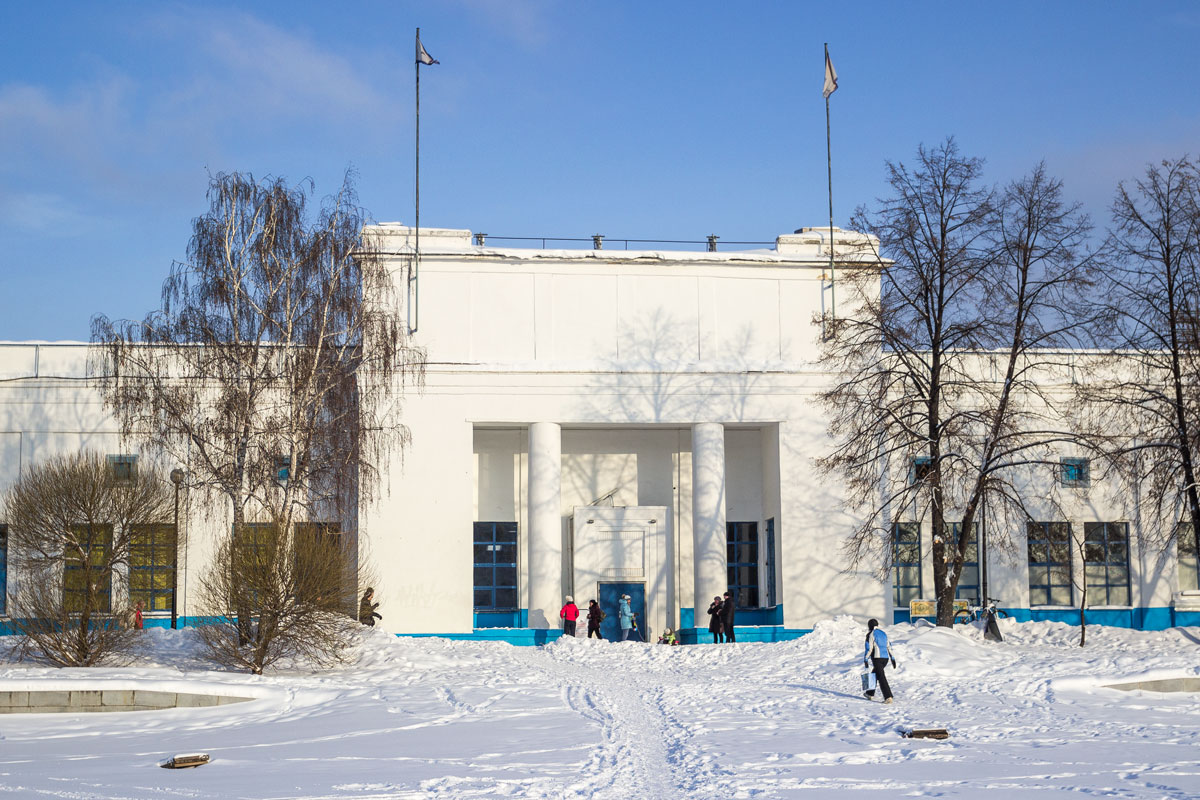
Or like a trolley, after all.
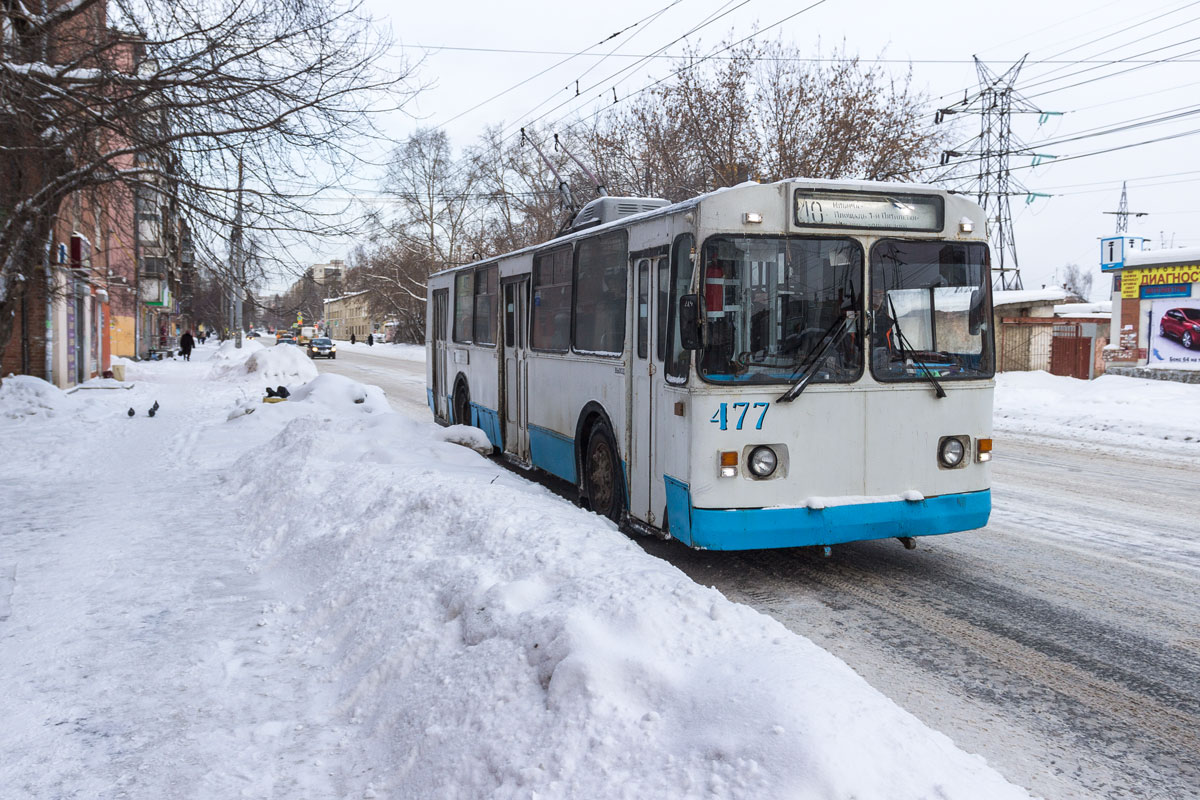
Yekaterinburg is growing with glass skyscrapers faster than any other city in Russia.

The main high-rise complex is called Yekaterinburg City. Nice, almost like in Europe.

At the same time, across the river, excellent Soviet constructivism is clearly visible.

This is the Dynamo Sports House, and it’s stunning.
Just for the sake of this building, it’s worth buying tickets and flying to see Yekaterinburg.

It’s surprising that even such a unique architectural monument was considered for demolition to replace it with yet another concrete war memorial.
Dynamo managed to defend itself, but plastic windows were still installed. Ignorance is indeed ignorance.

Yekaterinburg is the capital of constructivism. One can spend several days exploring everything.
The building of the Main Post Office.

The House of Soviets.
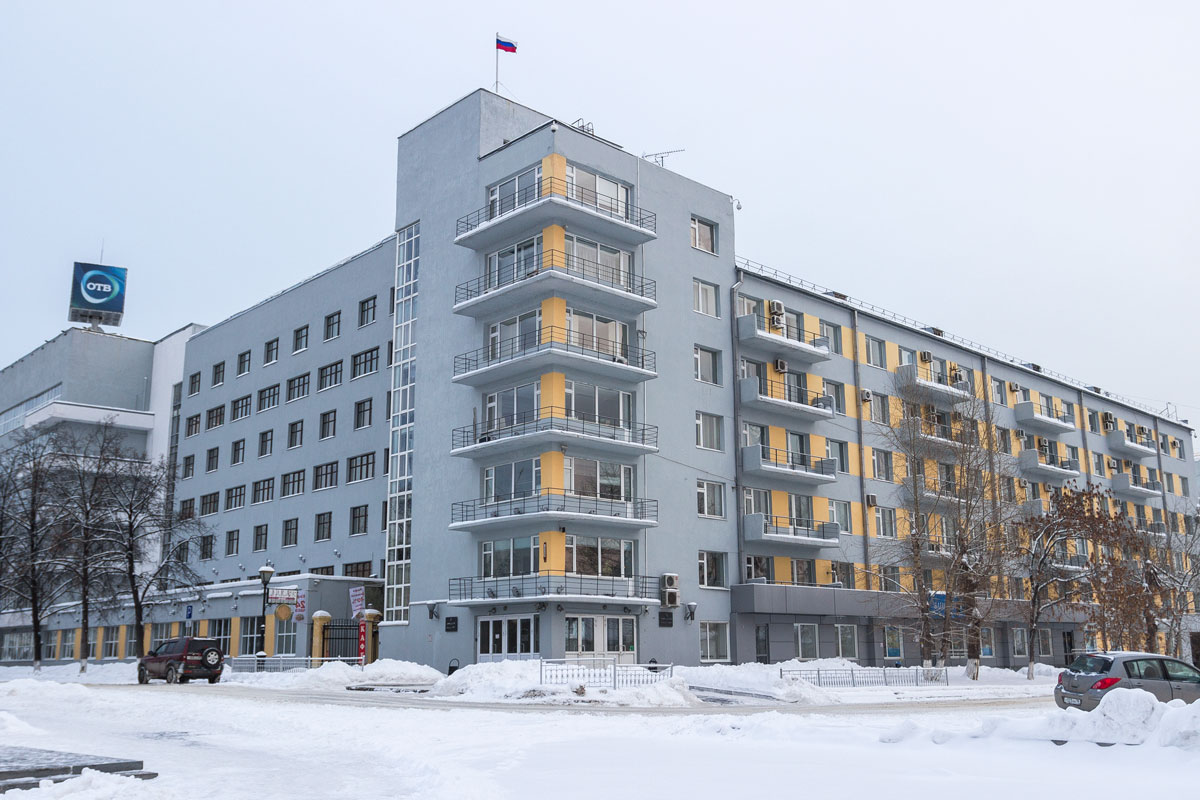
The House of Kontors.
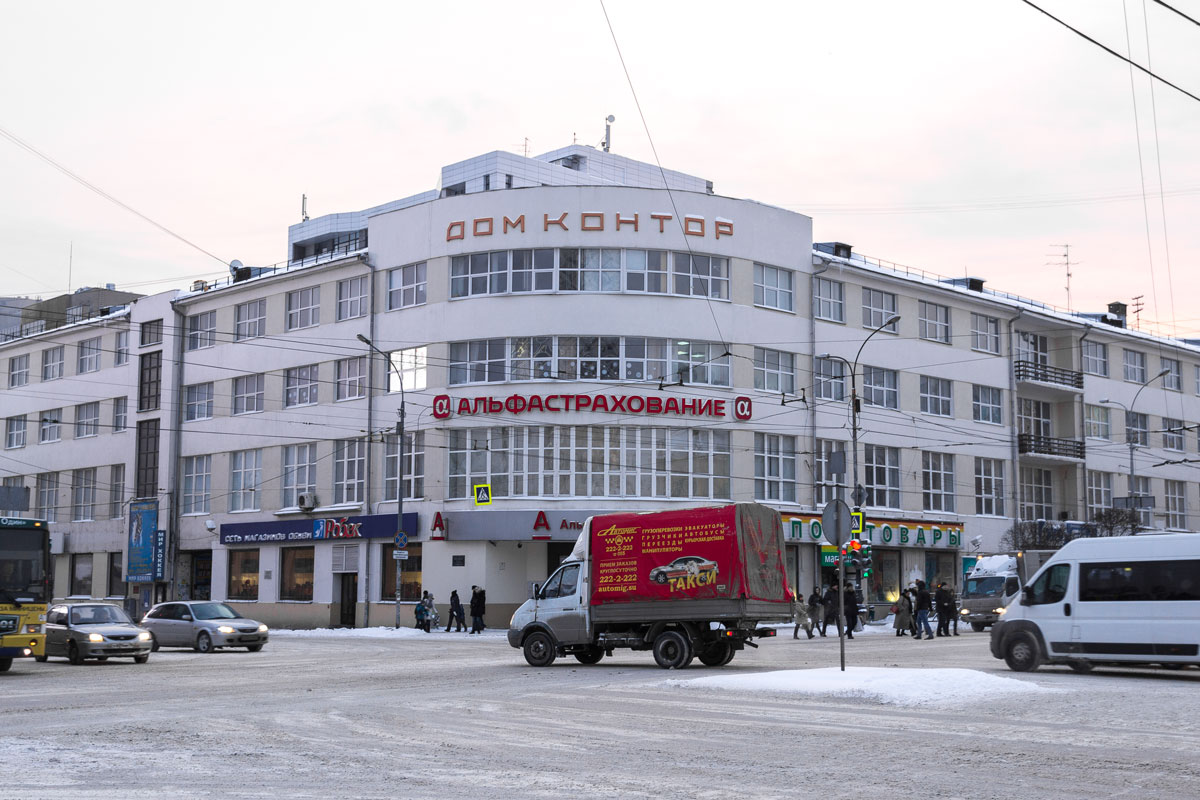
The water tower of the Uralmash plant. It can be said to be an unofficial symbol of the city. Excursions to the tower are even organized by appointment, as it is an architectural monument.

Russia could have had its own unique architectural style if all cities were built like Yekaterinburg. Unfortunately, currently, this style is neither appreciated nor understood. Historical buildings are demolished and covered with advertisements. Of course, a lavish house like Sevastyanov’s Mansion is much easier to perceive. Look at it, how beautiful it is.
Contemporary development in Yekaterinburg is no better than in any other city. It is equally tasteless and monstrous.

Although some influence can be occasionally found, cheapness still prevails.

The city streets look like something in between Moscow and the provinces. It’s like there are already skyscrapers visible, and occasional Stalinist Empire style buildings protrude, but the overall development is still predominantly low-rise.
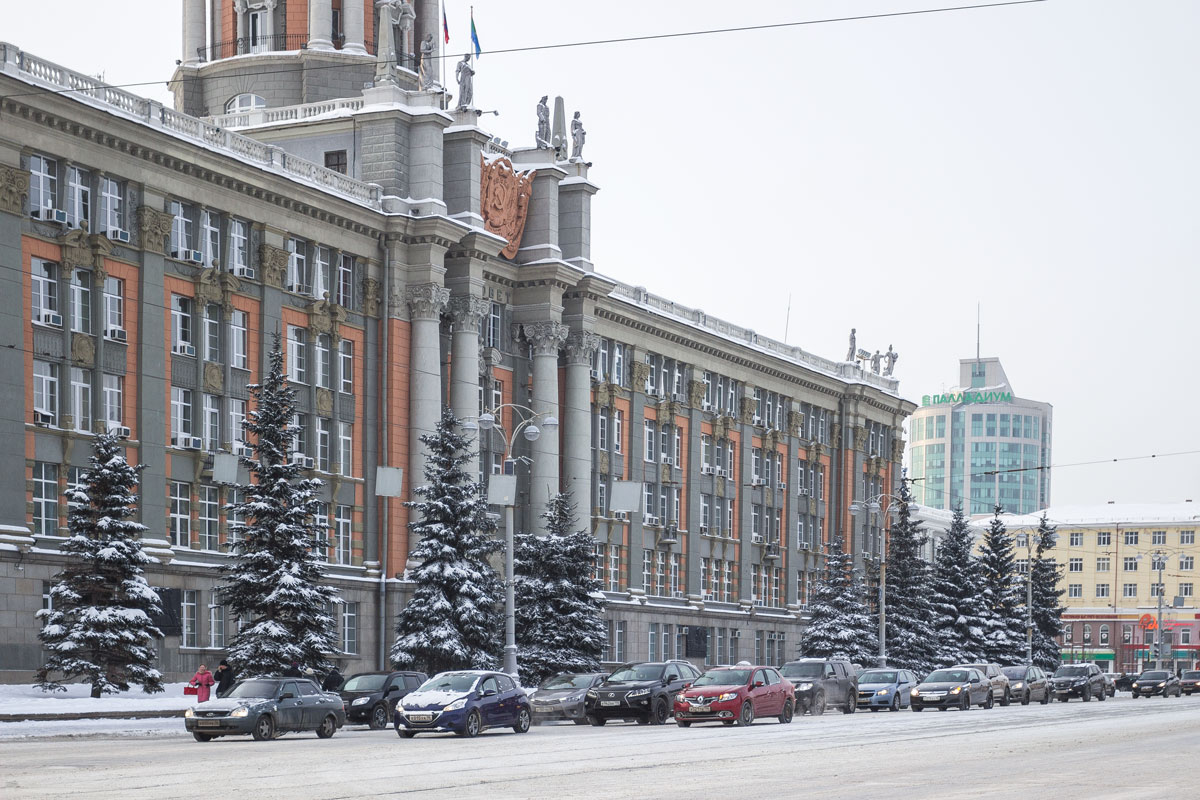



Of course, haphazard parking and traffic jams. Where would we be in Russia without those?

The city council building square is beautifully decorated for New Year’s.

Pre-revolutionary house.

Contemporary architecture.
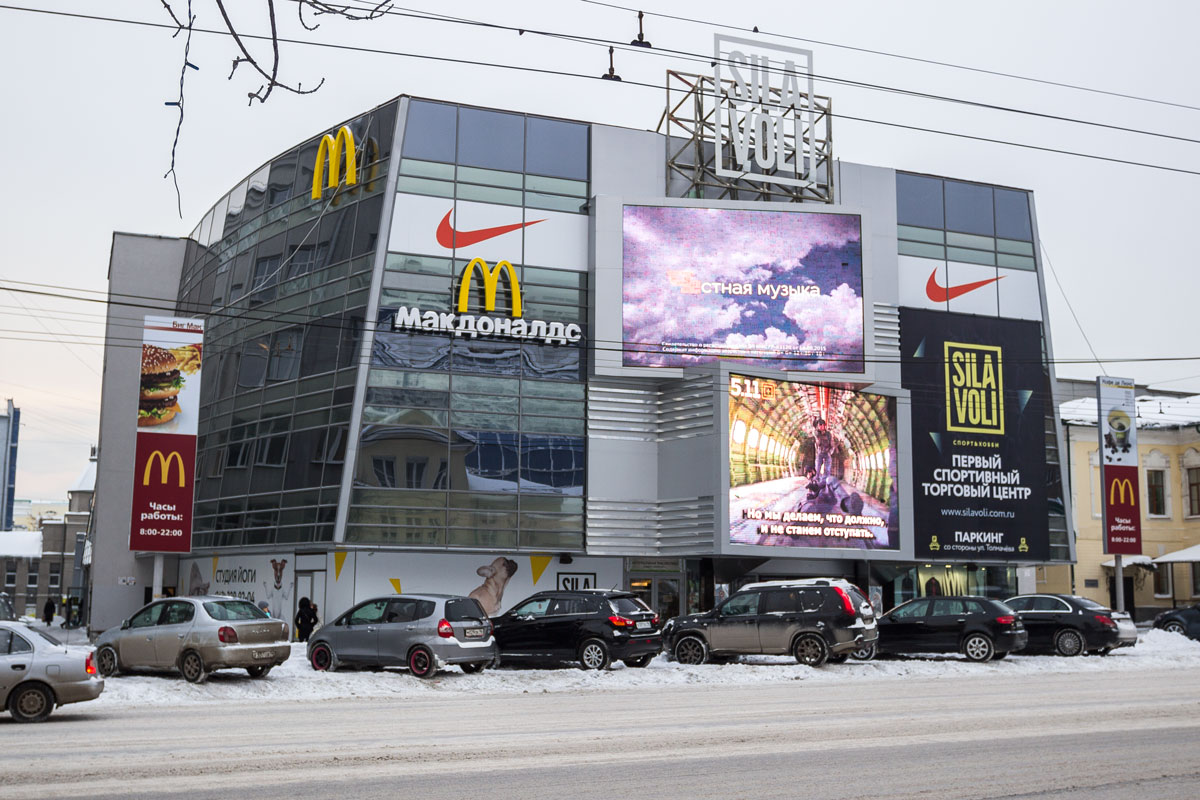
Surface transportation is represented by buses, trams, trolleys, and minibuses.
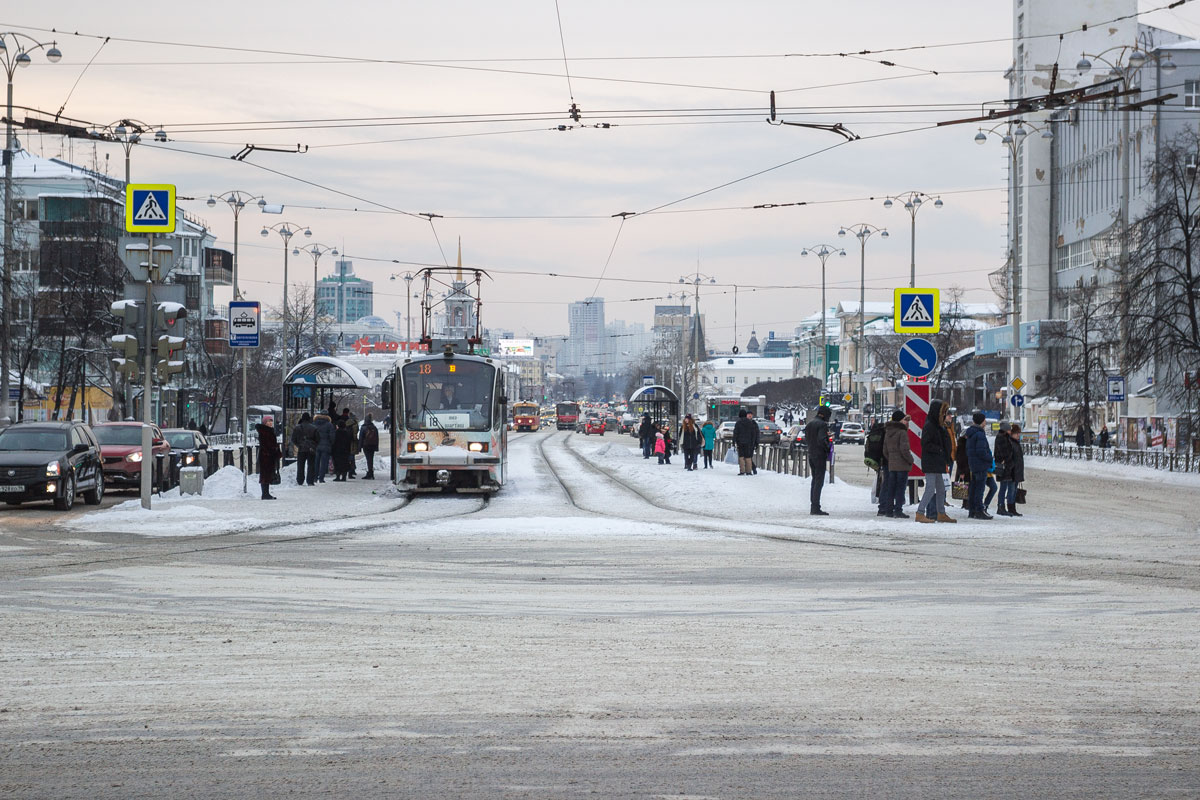

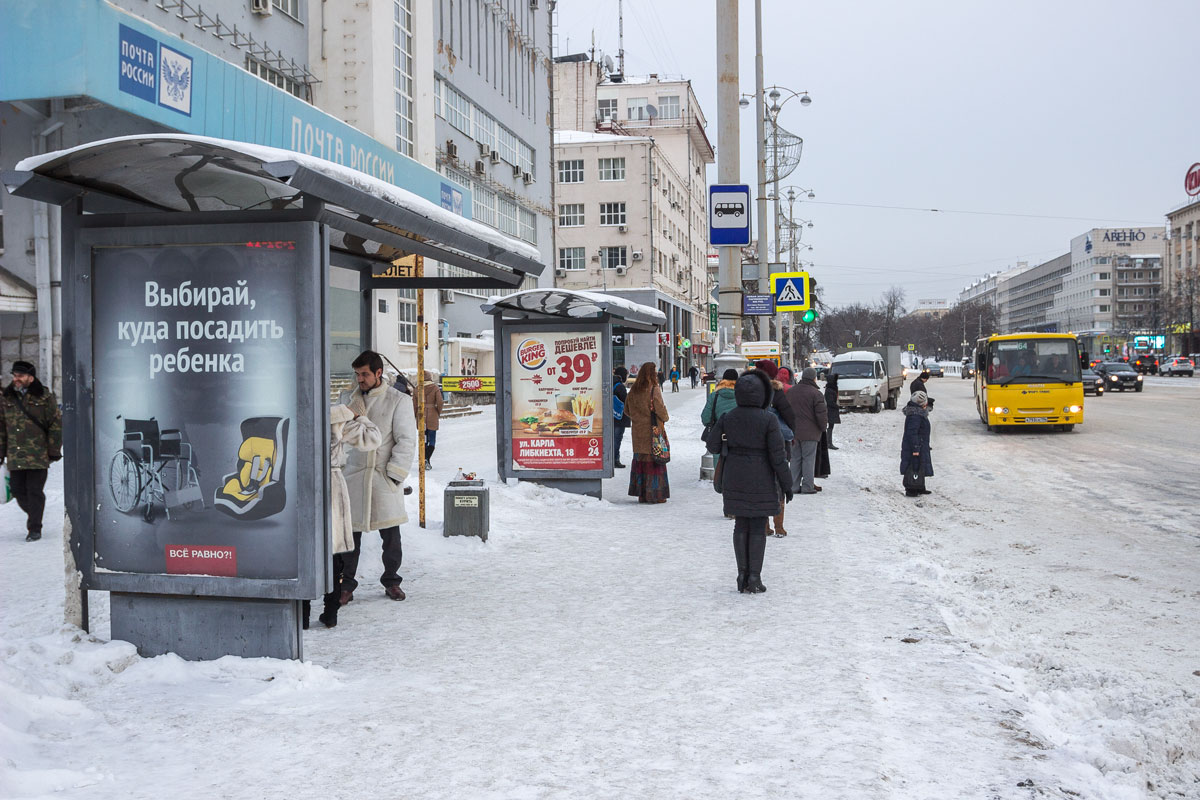
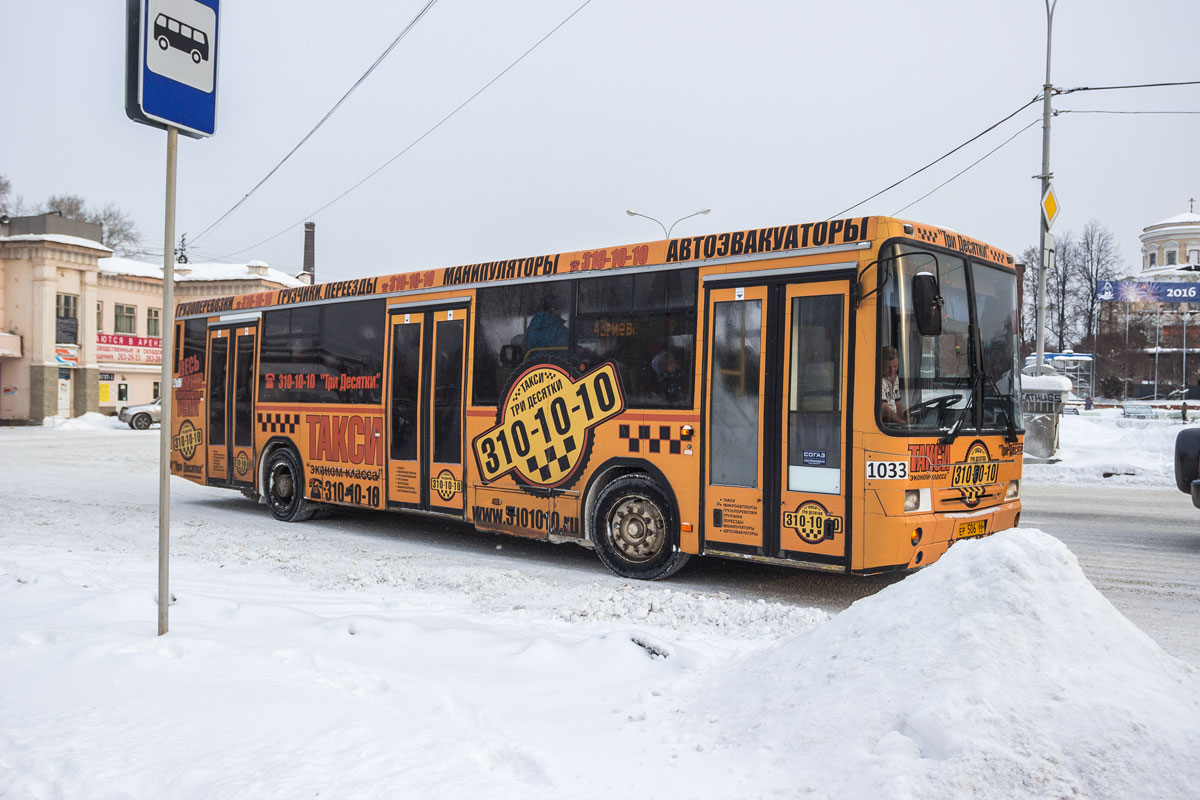
The metro currently has only one line. There are no special stations in it, just typical modern design. The carriages and trains are all familiar, of Soviet style.


The scariest district of Yekaterinburg is Uralmash. In the 1990s, a gang of the same name operated here. The group was involved in extortion, money laundering, contract killings, and politics. The leader of the gang even had a presence in the city council until he was eliminated in 2005. That’s when the “Uralmash” gang ceased to exist.
Currently, this area is relatively peaceful, but everything has become quite run-down.
Courtyards.
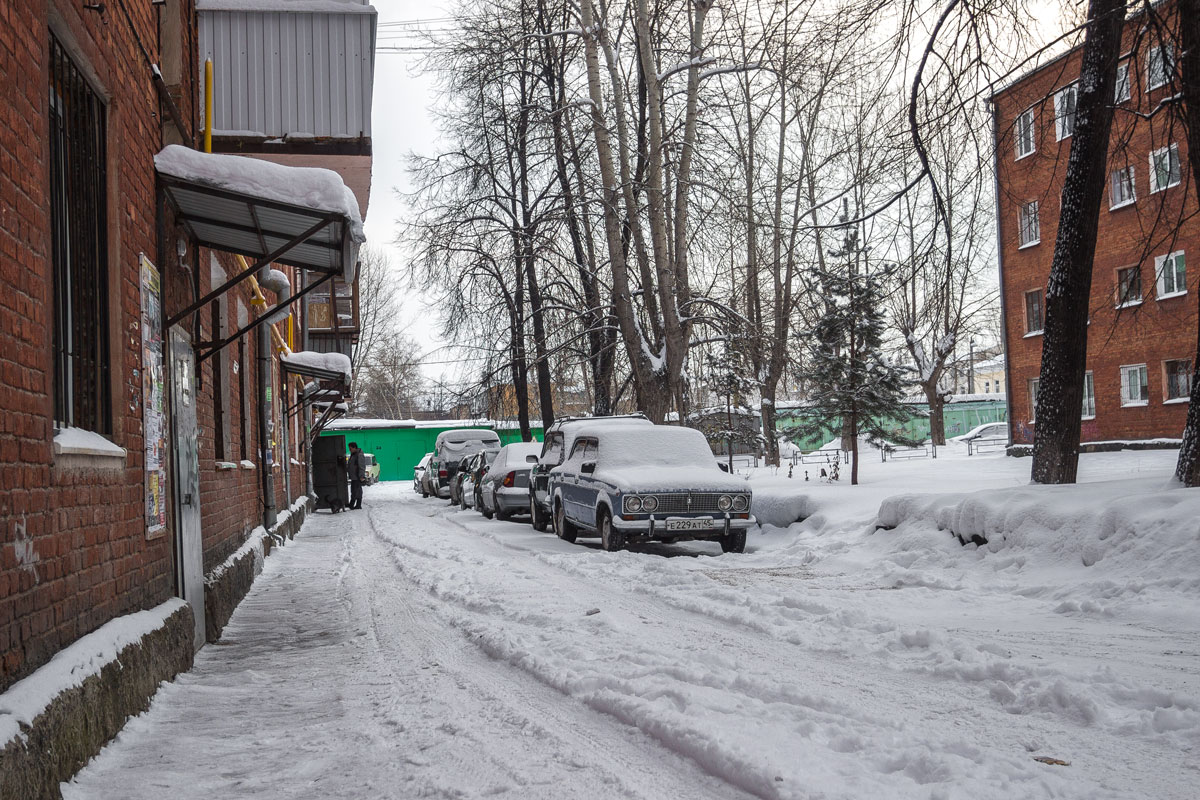


Entrances.


Pipes across the entire courtyard.

Signs grew into walls.

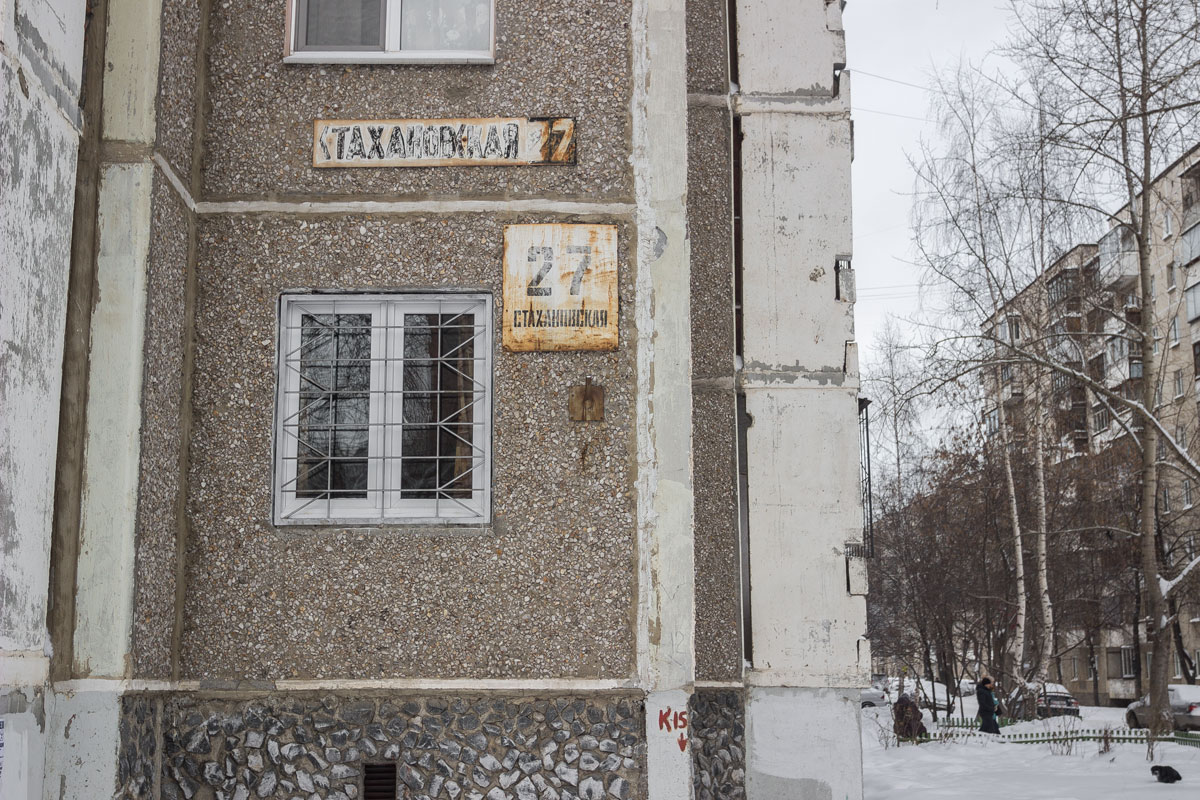
Gray panel high-rises.

Numbered parking spaces.

Uralmashas.

Even Uralmash is not devoid of excellent architecture. For example, here is the building of the former “Grad-Madrid” hotel.
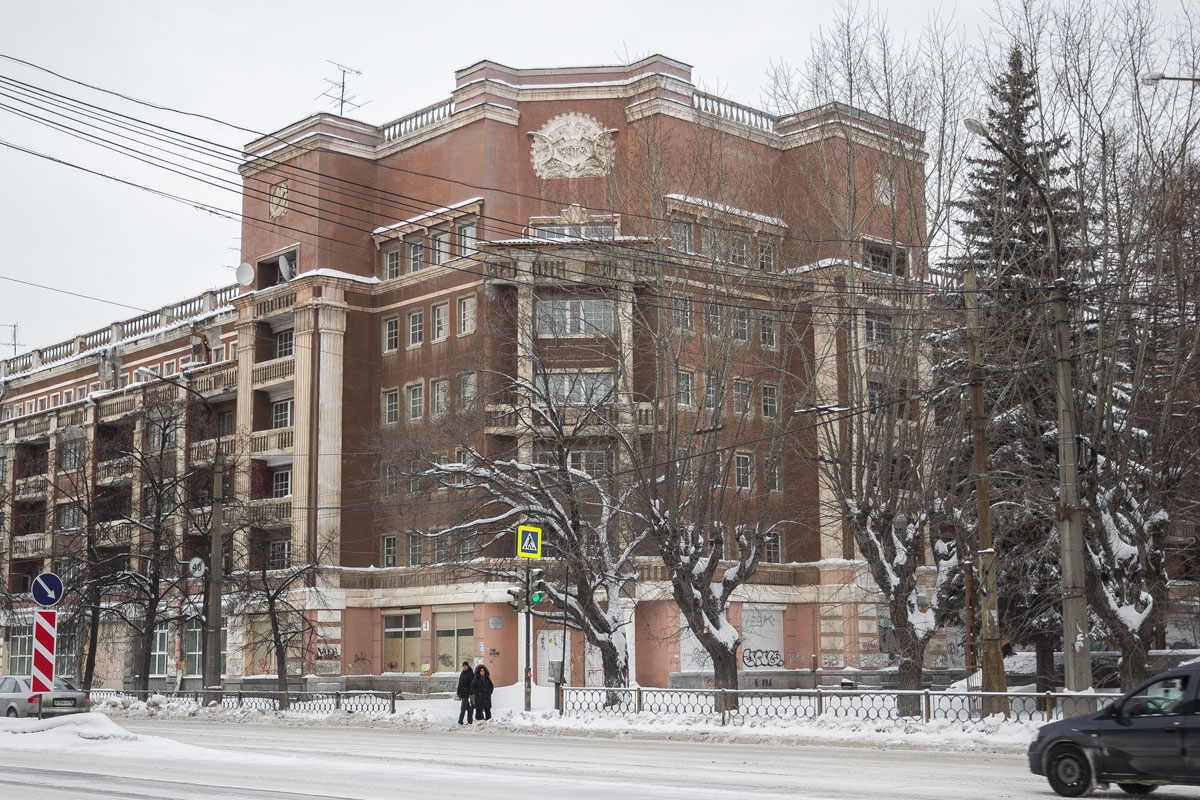
Or here is a residential building. Such things also exist.

In addition to constructivism and Uralmash, Yekaterinburg is known for a strong street art scene.
Timofey Radya is practically a Russian Banksy, only his works are not as large-scale. And there aren’t as many of them. If Banksy created powerful political works in Palestine and the Gaza Strip, Radya is still a modest local artist. But his works hit the mark accurately.
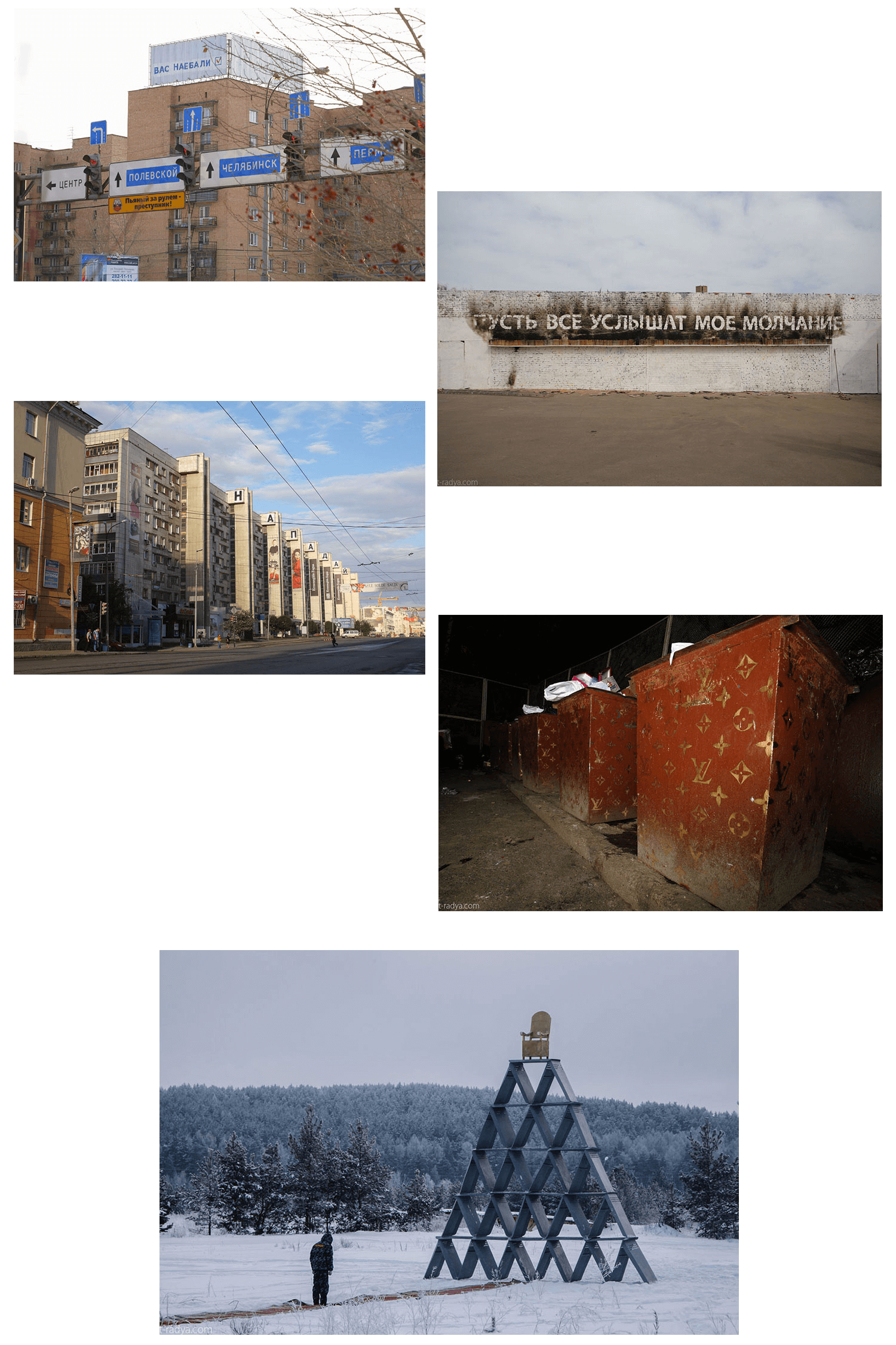
One of Timofey Radya’s works settled in Yekaterinburg for a long time. Once, during the night, brightly red lampshades appeared on the lampposts in one of the central parks of the city – it was his handiwork. It’s amazing that this beauty was initially intended to be destroyed, but art ultimately triumphed over bureaucracy.
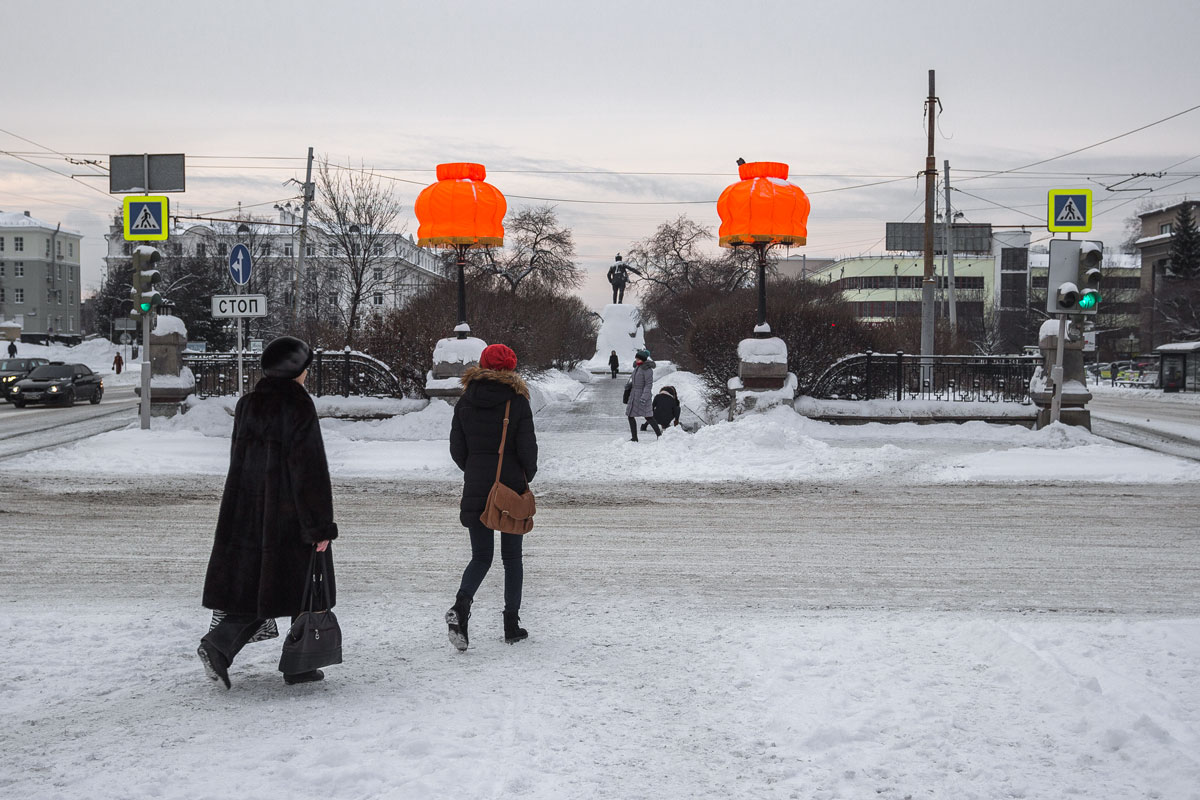
The park itself is just a park, but the lampposts create all the coziness, especially at night when they are lit. There isn’t much to do here, especially in winter.

In the same park, there is a monument to Sverdlov. In Soviet times, the city was called Sverdlovsk. So, it is in honor of Yakov Sverdlov.
Sverdlov was one of the main organizers of the Red Terror and the execution of the Russian royal family, Nicholas II. He must have been a very good person deep down in his soul.

After the collapse of the USSR, the city was given back its name, which it had for 200 years prior. However, they decided to keep the monument — the process of decommunization was not fully completed.
The monument to Sverdlov was preserved, but at the site of the execution of Nicholas II, a Russian Orthodox church was built in his memory.

In turn, opposite the church, across the river, at the foot of the Ekaterinburg City skyscrapers, the Yeltsin Museum was opened. Probably, it represents the most disliked president in Russia.
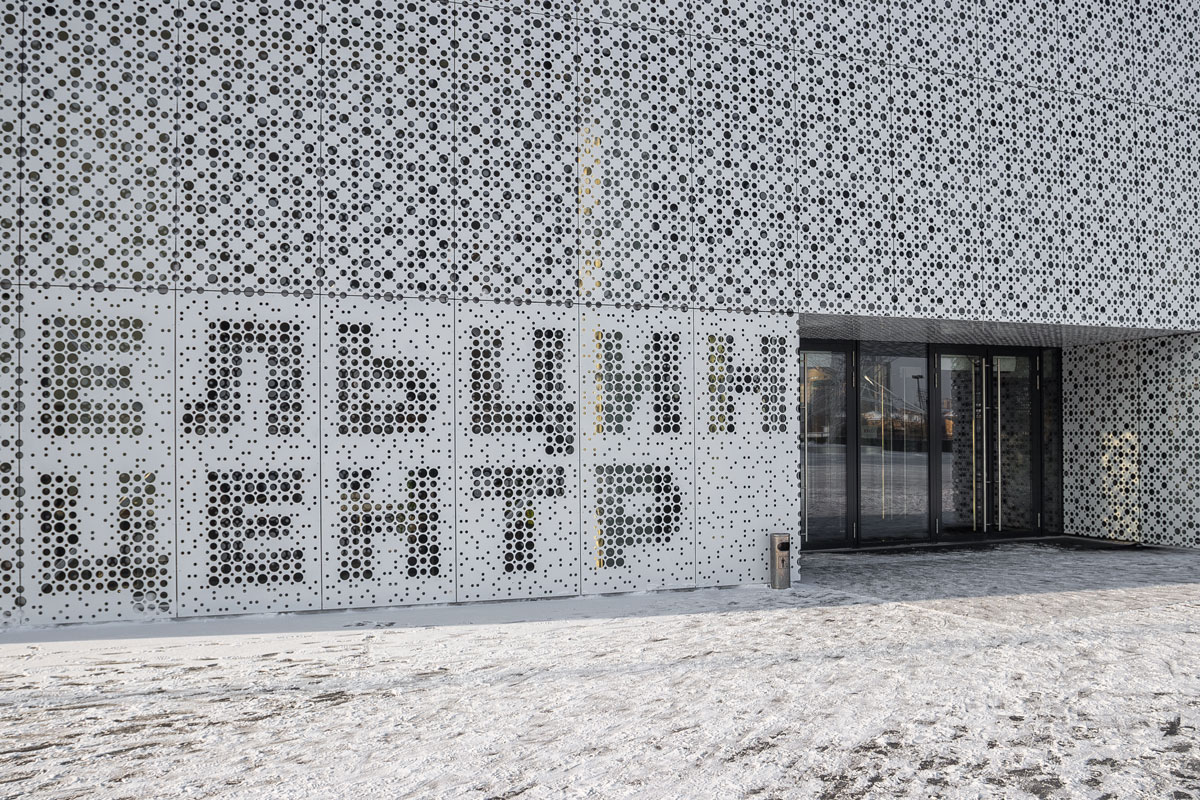
At this point, the reader should finally become impressed by how beautiful Yekaterinburg is as a city.
On one side of the street stands a luxurious mansion in the Neo-Gothic style, while opposite it is a strict Soviet constructivist building.
In the center of the crime-ridden, rundown district of Uralmash, there is a hotel with an incredible name, “Grad-Madrid.” Nearby stands the symbol of the city, a unique water tower. Just a little further down the road, the works of street artist Timofey Radya begin.
And only in Yekaterinburg can the memory of two incompatible, absolutely contradictory things — a bloody murder and a bloody killer — coexist so vividly and tangibly.
And amidst all this architectural and political eclecticism, the most contradictory politician in Russia, Boris Yeltsin, a native of Sverdlovsk, seems to mockingly look down from the skyscrapers. Fool boozer. But where the others, smart and sobers?
Yekaterinburg is beautiful. It is where the Russian Empire ended, and it is also where modern Russia began.
Perhaps, if someday monuments to Lenin start being dismantled across the country, in Yekaterinburg, Sverdlov can be left. It seems that Yekaterinburg is capable of withstanding this war, reconciling two opposing points of view, and showing that it is not about pieces of bronze and museums, but about something much more important, something that no other city in Russia can provide: the ability to accept.



